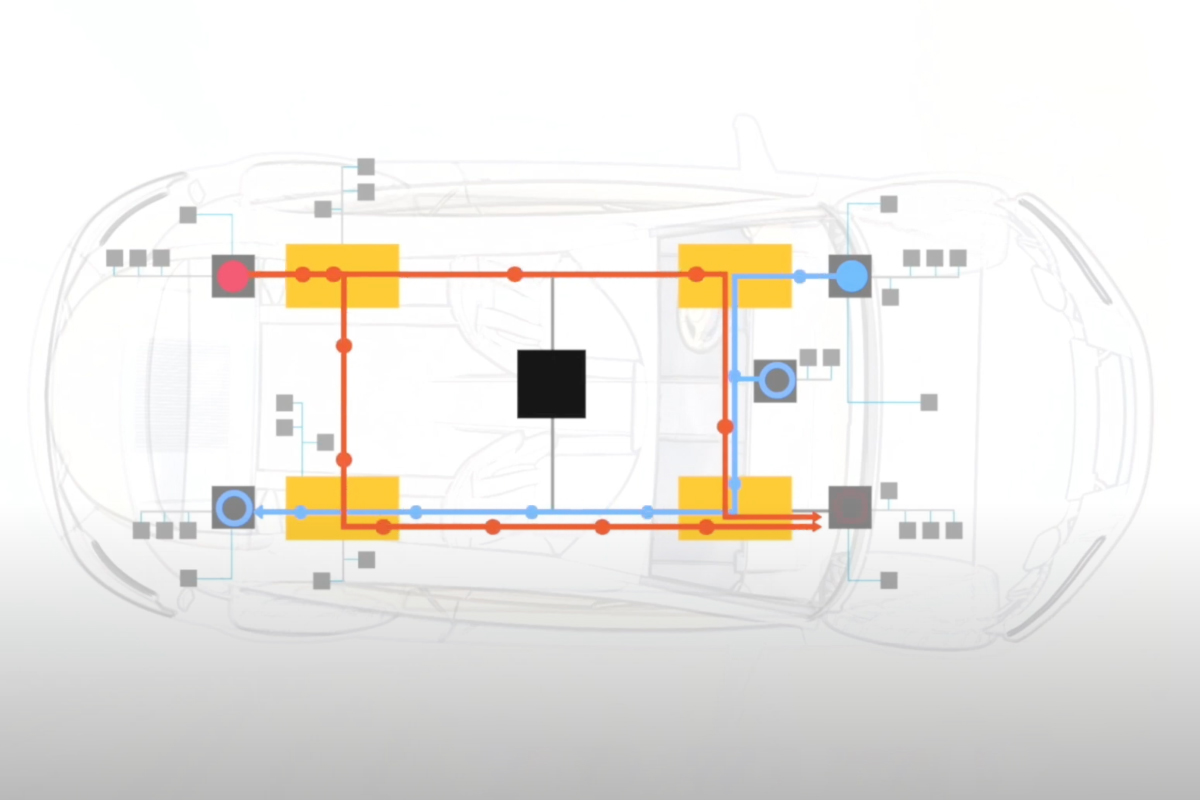The Garage Podcast : S1 EP9
NXP Semiconductors in Automotive, Part 2 of 2
In Part 2 of a two-part series with Brian Carlson, Head of Global Marketing for Automotive Processing at NXP Semiconductors, we look into the future of vehicles, such as zonal architectures, collaboration in many other aspects.
Listen to audio only version:
Episode Transcript | NXP Semiconductors in Automotive, Part 2
Table of Contents
- Overview
- NXP working with Sonatus on vehicle software
- The Sonatus Vehicle Platform
- Automotive software-defined networks
- Zonal architectures
- NXP S32Z and NXP S32E for Zonal architectures
- Ensuring a smooth transition from existing CAN architectures
- The gradual transition to Zonal architectures via “body zonal”
- Supporting clean slate or incremental vehicle evolution
- Evolution of S32 family and the NXP S32N
- Developing on virtual S32N in the cloud today
- Collaboration and safety-awareness is critical
- Two key points
- Conclusion
Overview
JOHN: Today in the garage, we present part two of our two-part series with NXP Semiconductors. Where we left off with our guests, Brian Carlson was talking about how SDV can be changed with a wide range of silicon and ecosystem solutions. In today’s conversation, we’ll continue and look into the future of vehicles, such as zonal architectures, collaboration in many other aspects. Let’s go.
NXP working with Sonatus on vehicle software
JOHN: We’ve seen also, you know that you mentioned a lot of software engineers, not just hardware engineers, I mean, we’re dealing with it, we’re meeting some of your incredible folks on a continuous basis to solve these problems. And we’re pleased to be a part of it. We’re pleased to be developing on top of a range of your platforms and working with you in the future. So it’s a great collaboration.
BRIAN: Yeah, definitely. I mean, you guys bring a lot of expertise in software-defined networking. And coming in from the infrastructure enterprise side, which I love about automotive is that we’re working with different types of companies that aren’t traditional automotive, we did another release this week on the security side of really bringing leadership security from the enterprise world. And now working with you guys from the networking world, we have a lot of expertise in networking too from a hardware point of view, if you go all the way back to Motorola and the heritage, Motorola, Freescale, now NXP, right, we’ve been in that in the digital networking area for many, many years. And having your software expertise on top of the silicon, it’s a powerhouse, right, it’s like best in class types of things, which is really valued by the OEMs. Because they need that. I mean, they’re building their expertise too but at the same time, what we’re finding is collaboration with the OEMs, and and the tier ones, but a lot with the OEMs now. They want to collaborate to go in deep, right, we’ll have OEMs come in for two weeks where we just deep dive and we work together with Sonatus also to really say, here’s how we can bring an end-to-end solution that’s optimized, it’s not just here’s a chip from NXP, here’s some software you can put on with Sonatus. It’s like we actually work together to make these things streamlined and work efficiently. And I think that’s the key is these types of partnerships. To make it easy, because this SDV, as we talked about is disruptive.
The Sonatus Vehicle Platform
BRIAN: It’s a challenge. And it requires that level of collaboration to make it all come together.
JOHN: That’s right. I mean, you talked about networking. That’s one area where we bring a skill set with a lot of folks from a software-defined networking world and data center networking world. So one of the things we do is provide our customers with a configuration platform, we call it our Foundation platform that allows customers to configure their vehicle networks, adjust them, manage them. And I think that’s very powerful. And then you mentioned also some of our data products, our Collector product is working today on top of NXP hardware, where we’re doing fine-grained data collection. So it’s very exciting to be working side by side with you and help deliver that kind of a combination solution to our OEM customers and tier ones.
Automotive software-defined networks
BRIAN: Yeah, it’s really important. And one thing I like to say about software-defined vehicles, everyone talks about over-the-air updates, they talk about putting new apps, that’s what I like about it’s not like just like the smartphone, but think about when you put a new application down or a new service anywhere on the vehicle. Now we’re not just talking about putting it on a server, we’re talking putting it at the lowest levels that drives new types of data, new bandwidth, new characteristics and think about how do you manage that. You can’t just put something down, you have to configure the network. And with this whole new Ethernet, the time-sensitive networking, which is critical for the backbone of these vehicles, right, you need to have a way to manage quality of service, determinism, if you just download something, and you don’t factor in traffic engineering, right, which is critical. This is this whole software-defined network. I don’t think people are talking enough about that. So we’re trying to educate people about, you know, that this is a critical area, it’s not just software and being able to deploy to virtual machines and all this. But now what happens with getting you the data when you need it, right. What happens with you getting critical information and moving that across the vehicle. If you don’t do the proper traffic engineering, or to have the dynamic way to reconfigure to manage the network, you’re in trouble. And that’s what I like about what you guys are doing, right? You’re offering that capability, and you’re enabling the OEM customers to be able to do that. Yeah. And that helps tremendously, because a lot of lessons have been learned, right?
JOHN: Yeah, you don’t need to reinvent the wheel.
BRIAN: Exactly.
Zonal architectures
JOHN: I think this is a perfect segue actually, maybe to talk about zonal. You mentioned zonal earlier. One of the areas we’ve been collaborating extensively with you is on enabling and plowing the field, if you will, for next-generation zonal networks. We have this fantastic demonstration we did this past Consumer Electronics Show [2023], and we speak about it frequently. We had a webinar with NXP a couple of months back talking about zonal which we can put a link to in the show description. But one of the things that you talked about vehicle network in real time I think of zonal as almost…kind of…you talked about real-time in terms of the processing, the zonal network and using these next-generation zonal is how do we bring that quality of service? How do we bring that real-time over to modern networks, because cars have been historically based exclusively on, or largely on, CAN networks or other technologies. As we shift to Automotive Ethernet and other kinds of newer technologies that are more configurable, you have to then realize that all traffic is not created equal. You know, I need to make sure my time-sensitive traffic gets there when it needs to, and I have maybe non-time-sensitive traffic, maybe video or other things, that might be sharing the same links. How do we manage that, and it’s about quality of service, but it’s not static, it needs to be adjusted as new traffic sources come to make sure you’re delivering on time.
NXP S32Z and NXP S32E for Zonal architectures
BRIAN: Yeah, exactly. And so that’s why this collaboration that we’ve been talking about has been really critical. But what we’re doing our silicon, especially in the zones, is actually putting hardware in there to be able to help enable that. Right, and actually putting within like the S32Z and E, right, they have a built-in Ethernet switch with lots of configurability options, they have internal ports, where I can actually map an Ethernet port to any software task, right. And so you can dynamically configure and control that leveraging, also Ethernet time sensitive networking, and the ability to do things in a chip. You know, one of the key things is how do OEMs and tier ones move from today’s model of boxes right? To this concept to virtual ECU’s?
JOHN: They need a glide path.
BRIAN: They need a glide path, that’s right, exactly yeah, they need a way to do that. That’s one thing that’s really important that we’ve been focusing on too, with our devices, with our software. So example GreenVIP is a software that lays on top of it, but we lay the foundation first with the silicon, by being able to virtualize everything, literally isolate everything in hardware, from the core to the memory to the peripherals and to the IO pin. That’s what’s really unique, we do the whole thing, it’s not just part of it, we do the end-to-end. So think about what we can do, we can actually through that hardware isolation, which you can bring up it, you can configure it dynamically, or lock it at boot time, securely. Right? And you can do that. So you are able to make that processor or that task look like the old days.Or the current days right now, right where it’s a box. So it has guaranteed quality of service, it has guaranteed bandwidth to map to the memories, right? It has guaranteed “I only control these I/Os and these timers” and all that. So you have that freedom from interference. So it starts with that silicon to be able to do that. And then that layer of software, like the GreenVIP that sits on top allows people to really take control of all those knobs and switches and be able to configure that whole chip like they need to. And one thing I like to talk about is like I could put that chip in the cloud in a box. And you could have multiple tier ones actually developing software on the same chip, even the same core, the same Arm core. And they don’t even know about the other tier ones. And what’s really important people don’t talk about this a lot is that there’s IP concerns. Yeah. So now we’re in a, you know, an integration world with multiple providers of software. You don’t want, you know, tier one A and tier one B to have access to the competition’s code. So now, this also enforces privacy and security and all this also, because they’re totally isolated. So you kind of get the best of both worlds, you get the consolidation. But now you still maintain the development environment. Like the individual boxes, and the privacy and the isolation, which is really critical to OEMs. If you don’t have this type of technology, right, it’s not going to work in SDV. So the hardware builds that, the GreenVIP configures it and then we work with partners, like Sonatus, right, to really layer their software and control on top of all that from the cloud all the way down into the zones.
Ensuring a smooth transition from existing CAN architectures
JOHN: Yeah, and you mentioned that we talked about this glide path and some of these hardware, you know, CAN is not going away. It is very much still gonna be there for a while. But at the same time, you also want to use the kind of the main backbone of the vehicle to shift to Automotive Ethernet or future standards. And there’s a lot of evolution of the standards happening right now. So we do a lot of work in conjunction with you on things like CAN to Ethernet, and using these modern some of the new TSN networking standards from the IEEE that allow you to take a CAN signal, convert it to an Ethernet signal and send it the other side and convert it back to a CAN signal which allows you to not have to re-engineer everything in one go. But you can have a transition path and at the same time, there’s also things like redundancy and so on in some of those standards that are really powerful.
BRIAN: Yeah, definitely. I’m glad you brought that up. That’s really important because SDV is a journey. It’s a marathon, it’s not a sprint. And think about all the legacy that OEMs have. And they actually have boxes right now that they don’t always know exactly what goes on because people designed them 10, 15 years ago and those people are gone and they may not be as documented as well as they could and they need to move that over. We’re actually working to help assist OEMs to move stuff onto platforms like this, but they’re still gonna rely in some cases also on legacy boxes. So SDV does not and zonal doesn’t magically come in and replace everything. Now, there’s some clean slate people right: Silicon Valley, China, right, where there’s a little bit different scenario. But the large OEMs have a lot of legacy that they want to still leverage in places, and it’s more of a marathon. So you need that ability to support some of these that hang off the zone. These are like those end nodes or those legacy ECU’s. And they still use CAN, yeah, or they’ll start to leverage CAN XL, we start to support CAN XL now, right to give higher speed, bandwidth and such. So you need this, to be able to support that legacy, the legacy interfaces, they don’t go away. So CAN, it will be around for a long time. But the backbone really to connect all this is going to be more the TSN Ethernet. And the redundancy does come in, that’s part of it. So like it’s talking about quality of service, determinism, guaranteed bandwidth, but having that redundancy, because what happens if a line breaks, you still need to maintain the vehicle.
JOHN: And you mentioned earlier in zone, one of the key things is weight. In terms of the vehicle weight, the cabling complexity, the assembly complexity of traditional vehicles is a huge impediment to production. So I think it’s something that is going to be improved with that way.
The gradual transition to Zonal architectures via “body zonal”
BRIAN: I have an example, real quick, on that one, because people don’t think about this sometimes. But sometimes, you know, we talked about zonal, we talked all about the shift. And I think that’s going to be incremental sometimes. If you look at every OEMs, doing a little bit different approach. And some are evolutionary, and will go from one approach, and then maybe another approach a few years later. So this is not gonna just happen in 24, 25, necessarily, there’ll be different steps. But one thing that’s interesting is one of the incremental steps is what we call body zonal. And you made me think about this, because manufacturing is a huge issue today, right? Where they have these large cables. And we’ve heard stories where they actually have to heat the cables to actually get them in the door. So think about, we want to eliminate a lot of wiring complexity, because the reliability and manufacturing is a huge issue. If I can decrease the time manufacturing, that’s more margin for my vehicle, I can reduce my costs.
JOHN: For the OEM.
BRIAN: For the OEM. Yeah, this is huge. But now we’re seeing what’s called body zonal, right, there may be this incremental step, well, let’s kind of ease to zonal, but let’s do the body because that gives us a big bang for the buck. And it’s fairly easy relative to doing all the real-time and all the other stuff that has to happen…
JOHN: Because it’s localized…
BRIAN: It’s localized. So think about I have those four zones. And I have one box, I’m running one cable, not 100, 100 wires into a box. Right? It makes it easy to manufacture, it sets me up for the future, you start to do that integration into these devices, you start to integrate and understand isolation and how you develop in a new SDV world. And at the same time, you’re eliminating weight, all that weight of all those cables, and copper complexity, reliability, and goes up and all this stuff. So I just want to make that point, because you brought that up that that is a key aspect right now. And one of the steps in some cases for OEMs, to move towards zonal focus initially just on the body part because it provides all that value.
Supporting clean slate or incremental vehicle evolution
JOHN: Right, and I think more if you pull back more broadly, and you mentioned kind of some of the…there’s companies that are more aggressive and going through a completely clean slate approach, and others that run a legacy path and everywhere in between. And one of the things that we’ve been doing, and it sounds like you’re doing as well is, is showing our OEMs and tier one customers that you don’t have to throw away everything you’re doing. If you want to start with a clean slate, that’s great, we can help with that. But if you have an existing infrastructure, existing foundation capabilities, and so on, we can help you get to that future place at the pace you’re ready to do. That’s exactly right. And I had conversations with OEMs. And tier ones actually, this week here, there are several that came into our show, and we have those types of discussions, because they’re all trying to determine what is the right path? What is the least…managing the risk, basically, right? How do we get those value propositions that we started talking about? How do I do that? Even if it’s incrementally where do I get the most bang for the buck? And how do I do this over time, because they all have constraints. Everyone’s going through, they have to hire new types of talent, they have to start…do more cross-organizational and people have to think at a system level, not a box or subsystem level. So that’s, that’s huge. But they have to start thinking, What can I do in the interim, as I’m transforming my organization? What can I do to get there, so these conversations, whether it’s through you through the software, the configuration, automation, us for the silicon, right, and the key thing there for silicon is scalability. So scalability to have compatible devices that are the same device but have scalability, performance, footprint compatible, software compatible, but take you also into the future, right, whether it’s within that same family or an evolution into the future, like what we’re doing with five-nanometer devices. You know, we’re already looking… we have devices coming in that are five nanometers that just take this to the next level.
Evolution of S32 family and the NXP S32N
JOHN: You mentioned there’s a new part coming, do you want to tease us a little bit about that?
BRIAN: Yeah. Yeah, people keep asking, right. We showed our chip at Computex, our first test chip… five-nanometer test chip. So we actually have a functional test chip today. We have a five-nanometer device, the first one in fact, the first five-nanometer device, I believe in NXP. It’s called the S32N, and S32N is going to play a key part in these SDVs. So we’re not really given much more than that other than it’s coming and that there’s a nice, I would say, roadmap from our current silicon to the next generation. And so look in the near future for some exciting announcements there.
Developing on virtual S32N in the cloud today
BRIAN: And the cool thing about it we haven’t really talked about that is, you know, how does the software development process change? How does the cloud come in? Because this really, I would say, is the trigger point where things are now all developed in the cloud. Pretty much, right? Because before the silicon avail, the production-intent silicon is coming soon. And how do I develop ahead of time, right. And so we talked about the industry talks about shift left, right to shift my software development a year or more. And we’re living that, right, we’re living that with S32N and because thousands of engineers are actually developing software today. And they’ve been developing for quite a while in the cloud on the virtual S32N ?
JOHN: That’s exactly right. We talked extensively with Stefano Marzani from AWS about the importance of prototyping in the cloud, it was in one of our recent episodes, where he talked about the ability to, as you said, develop software before the hardware is even there, and have engineers have, you know, much more scalable ability to develop then if you are tethered to real hardware. So it’s a really important benefit. And it’s great to hear you’re doing that same way for in-house as well for your own development and prototyping.
BRIAN: It’s clearly important because it’s not only the shift left, it’s the, you know, taking this into the future, it’s the whole continual development. Like you said, the car improves over time. So we actually, you know, support, not just shift left, but extend it to the right. So it goes through the whole lifecycle. So the infrastructure you put in, you know, starts with the SoC, it’s the box, the zone or controller and bringing those together. So you’ll see complete vehicles being virtualized and digital twinning becomes huge. And it’s about using the cloud to basically do the whole development cycle, not just for development. But for the whole lifecycle of the car.
JOHN: This whole aspect of prototyping, we could spend an hour just talking about that.
BRIAN: It’s a huge topic.
JOHN: So we won’t try today. But maybe we’ll have another episode. Maybe we’ll get Stefano here to join us for a three-way conversation about that. Because I know you’ve done a lot of work. You mentioned with AWS, but especially on this prototyping aspect, you really been leading the way.
Collaboration and safety-awareness is critical
JOHN: So look, we had a long conversation. And we’ve touched on so many areas, maybe let’s just any final thoughts from you?
BRIAN: Yeah, I think we hit all the key points. So at a high level, really, this is about disruption, but it’s disruption for good about setting the platform for the future, that’s gonna really enable a lot of new use cases, opportunities, revenue generation for not just the OEMs. But I think for the ecosystem. But the thing is, it requires that collaboration, it requires hardware, silicon, that is really optimized to do this, because if you don’t have that silicon base, right, people talk about abstracting software and hardware, almost like hardware doesn’t matter, we can just plug in a board from here or there. It’s not as simple as it’s made out to be.
JOHN: It’s a partnership.
BRIAN: It’s got to be, and that’s the key point is that the hardware has to be really, really good. And so I look as an innovation sandwich like these different layers, like you know, we’re at the foundation where that bun on the bottom, that’s bringing innovation, of how I do this efficiently, safely, securely. And you got to think about this, this is not a data center, or smartphone or the devices that people worked on before. It’s more like an airplane, right? Your life is depending on it. So we can’t forget safety is huge. And that has to be, you know, this is a big concern. A lot of people talk about, yeah, software-defined vehicles, but I have to have safety: You can’t do both. Well there are ways and it does require a lot of hardware and software, that supports it and layering it and actually make it safe. That’s not an easy thing. So it’s about the collaboration. Based hardware that’s designed for SDVs that does the security, that does the safety throughout the vehicle, not just certain boxes, but the whole vehicle. It’s the software enablement and the partnerships, the ecosystem like working with Sonatus to bring those capabilities and expertise from these other markets and other, you know, worlds here, and then bringing it all together and working very collaboratively with the OEMs and the tier ones to be able to bring the end to end solution. So I would say the takeaway is it requires the whole industry to work together, not just one player can do it all.
Two key points
JOHN: Yeah. And that’s what I took from today’s conversation is two key points. One is that there’s this… a continuum. It’s not… there’s not one shift, you don’t replace with a central computer, put a server in the trunk and that’s it. That’s not going to solve the problem. You need a heterogeneous solution that serves different needs. You’d have it in real-time. The second thing you mentioned I think is really compelling is this journey to SDV is a journey. It’s a marathon, not a sprint, as the saying goes. But I think that’s a pretty apt analogy where you know, there are going to be transitions and each OEM will transition at different speeds in different parts of the car solving different problems. And you know, I think it requires partnership: hardware and software working together to help each OEM, each tier one get to that point at the way that they’re they’re ready to do.
Conclusion
JOHN: So we’re so excited to be partnering with you.
BRIAN: Definitely.
JOHN: And excited to be rolling down the road in production vehicles-
BRIAN: And say hey NXP and Sonatus inside, right?
JOHN: Me, too! I have a smile every time I see one! So hey, thank you so much for Brian, for joining us in The Garage. We’re really pleased to have had you here.
BRIAN: I’m glad I had the opportunity. I’ve been watching these episodes, and say I’d love to be able to talk with you. I love talking with you and SDV is such a great topic because like I said, there’s so many angles. So like I said, it’s a goldmine and you have a goldmine of episodes ahead, I’m sure of just bringing to light all of that to your audience. Thank you for the opportunity.
JOHN: Thank you so much. We appreciate you bringing a different perspective on today’s episode.
BRIAN: Thanks, John.
JOHN: So thank you so much, Brian. Today we talked all about software-defined vehicles from a new perspective, from the hardware perspective, and looking at how silicon and how silicon plus ecosystem partners can really make the difference for software-defined vehicles. We hope you enjoyed this conversation if you like what you’re seeing from The Garage please like the episode and even better subscribe so you can see our next upcoming episodes. Thank you for joining us and we look forward to seeing you again in The Garage very soon.
Recent episodes
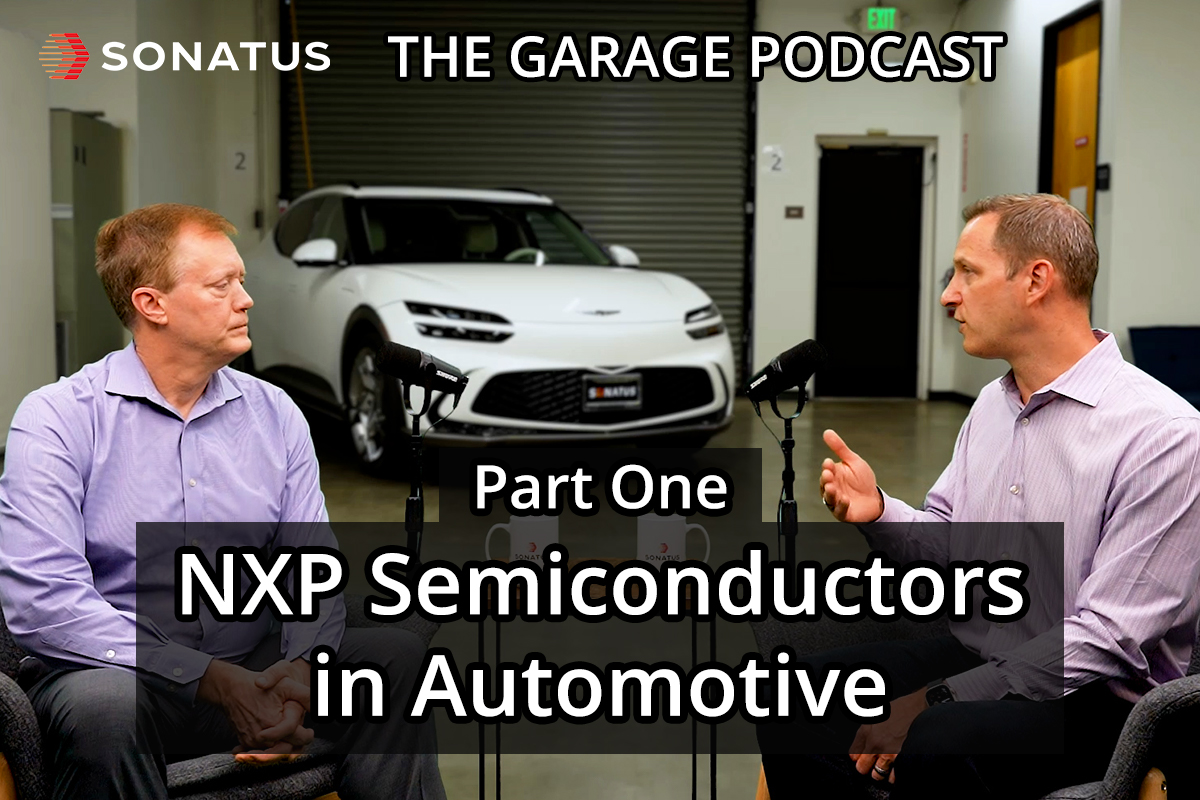
The Garage Podcast
NXP Semiconductors in Automotive, Part 1
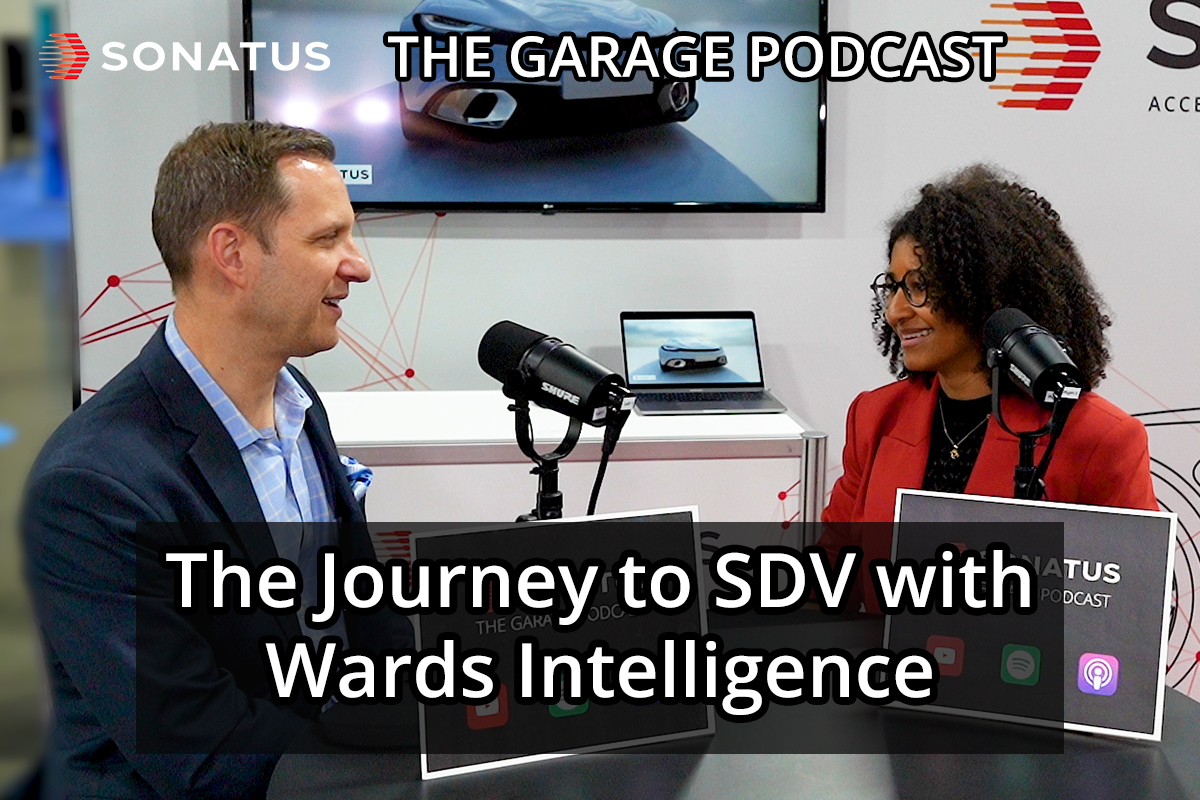
The Garage Podcast
The Journey to SDV with Wards Intelligence [Live at AutoTech: Detroit 2023]
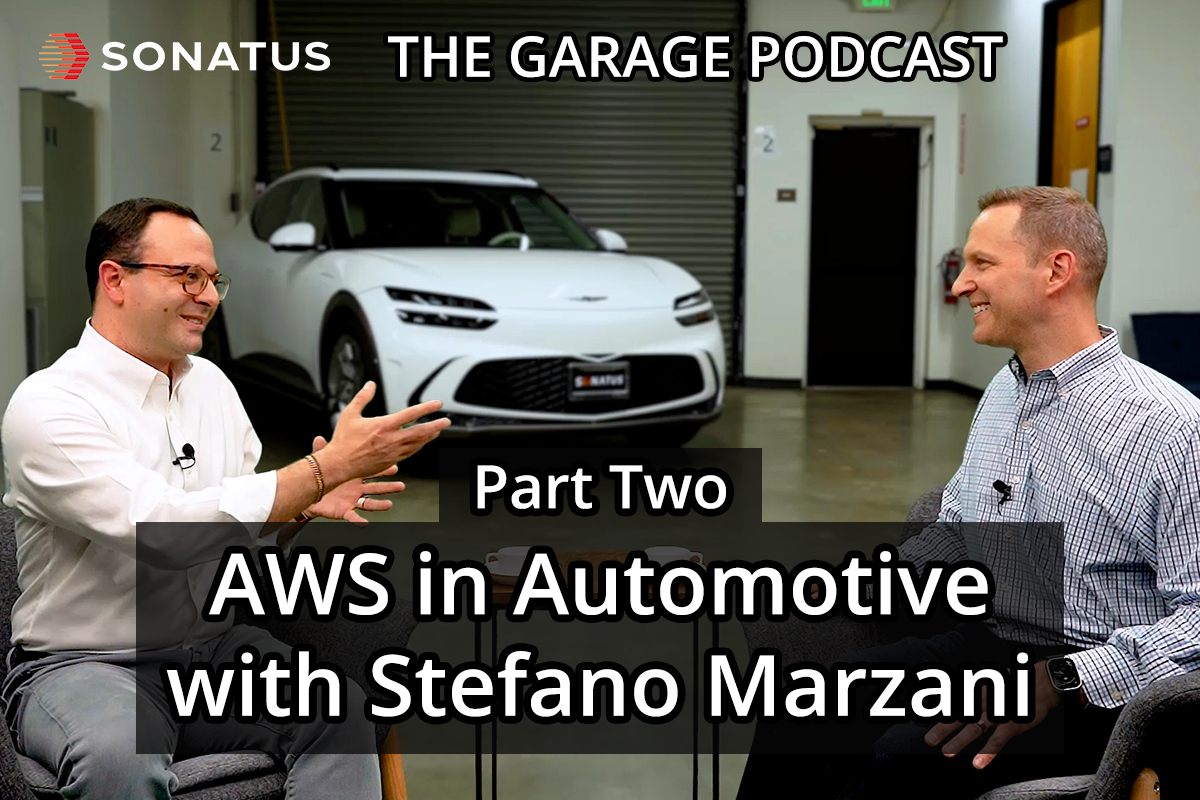
The Garage Podcast
AWS in Automotive with Stefano Marzani, Part 2 of 2
Related resources
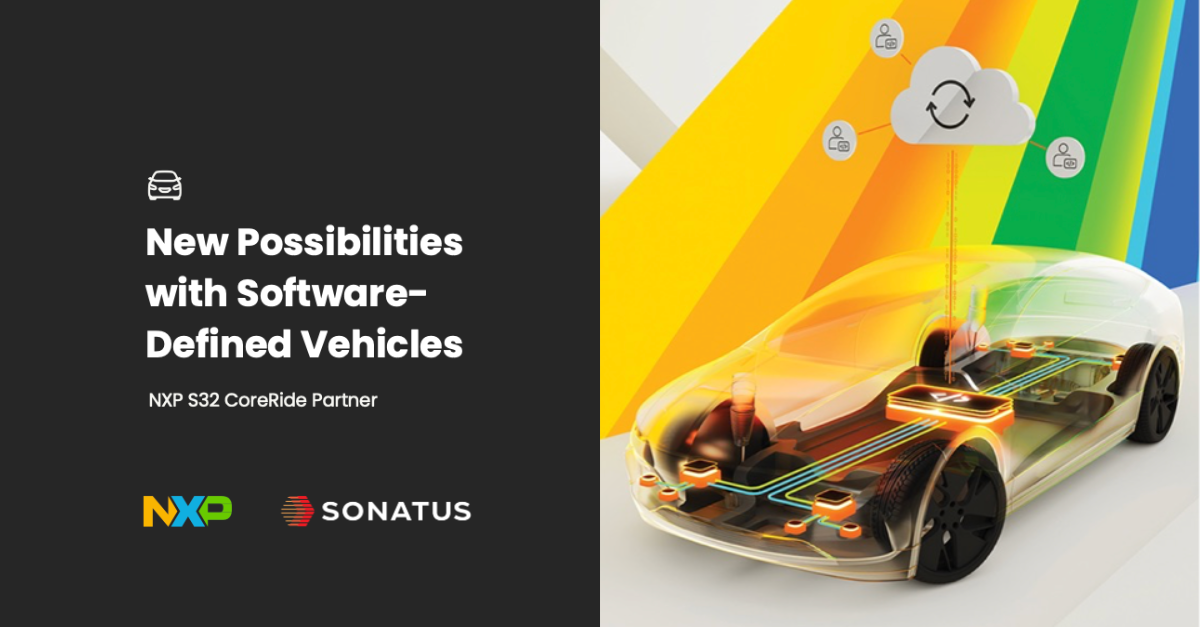
Sonatus Joins NXP’s S32 CoreRide™ Platform
The Open S32 CoreRide™ Platform allows to further streamline the adoption of Sonatus alongside NXP and deliver the next wave of compelling SDVs.